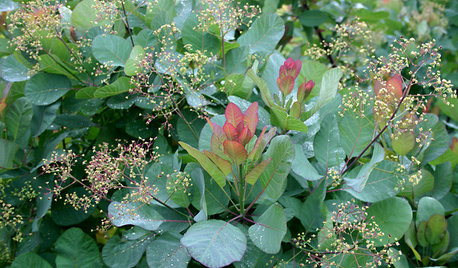advice on older deciduous azalea specimen
doctorsteve
16 years ago
Related Stories

GARDENING GUIDESGreat Garden Combo: 3 Wonderful Plants for a Deer-Resistant Screen
Protect your privacy and keep deer at bay with a planting trio that turns a problem garden area into a highlight
Full Story
TREES11 Japanese Maples for Breathtaking Color and Form
With such a wide range to choose from, there’s a beautiful Japanese maple to suit almost any setting
Full Story
EARTH DAY5 Ideas for a More Earth-Friendly Garden
Consider increasing the size of garden beds, filtering rainwater and using plants to reduce energy use
Full Story
ARBOR DAY8 Reasons to Plant a Great Tree
Beauty is its own reward, but the benefits of planting the right tree in the right place go way beyond looks
Full Story
LANDSCAPE DESIGNGreat Design Plant: Old Fashioned Smoke Bush
Balance garden color with this shrub's cool blue-green foliage, luminous when backlit and sporting yellow-green flowers in spring
Full Story





rhodyman
doctorsteveOriginal Author
Related Professionals
Chattanooga Landscape Architects & Landscape Designers · Franconia Landscape Architects & Landscape Designers · Prairie Ridge Landscape Architects & Landscape Designers · Alexandria Landscape Contractors · Bethlehem Landscape Contractors · Mooresville Landscape Contractors · Damascus Landscape Contractors · Del Aire Landscape Contractors · Forest Hills Landscape Contractors · Fort Atkinson Landscape Contractors · Fuquay-Varina Landscape Contractors · Plantation Landscape Contractors · Reedley Landscape Contractors · The Woodlands Landscape Contractors · Wayland Landscape Contractorslaurabs